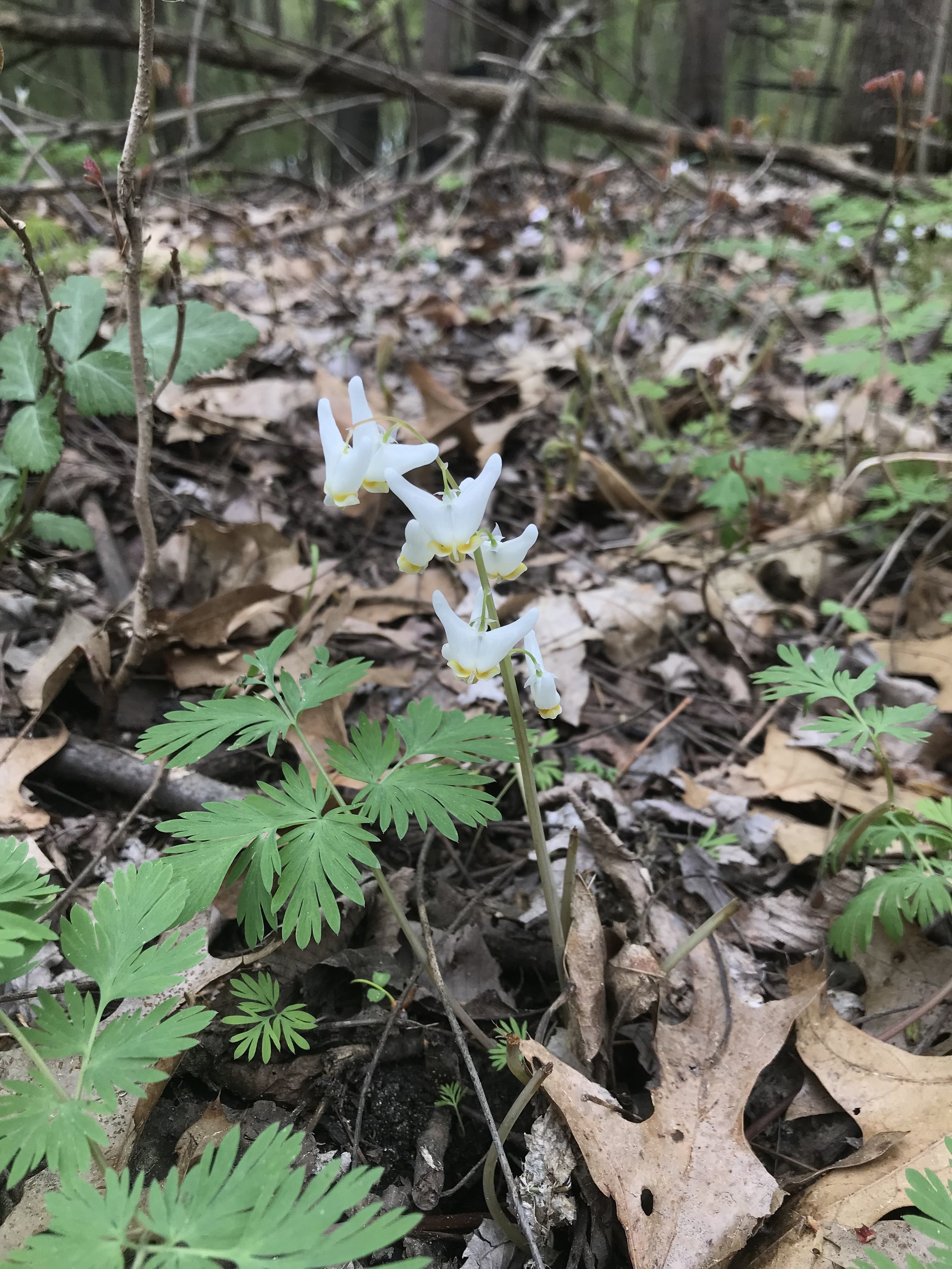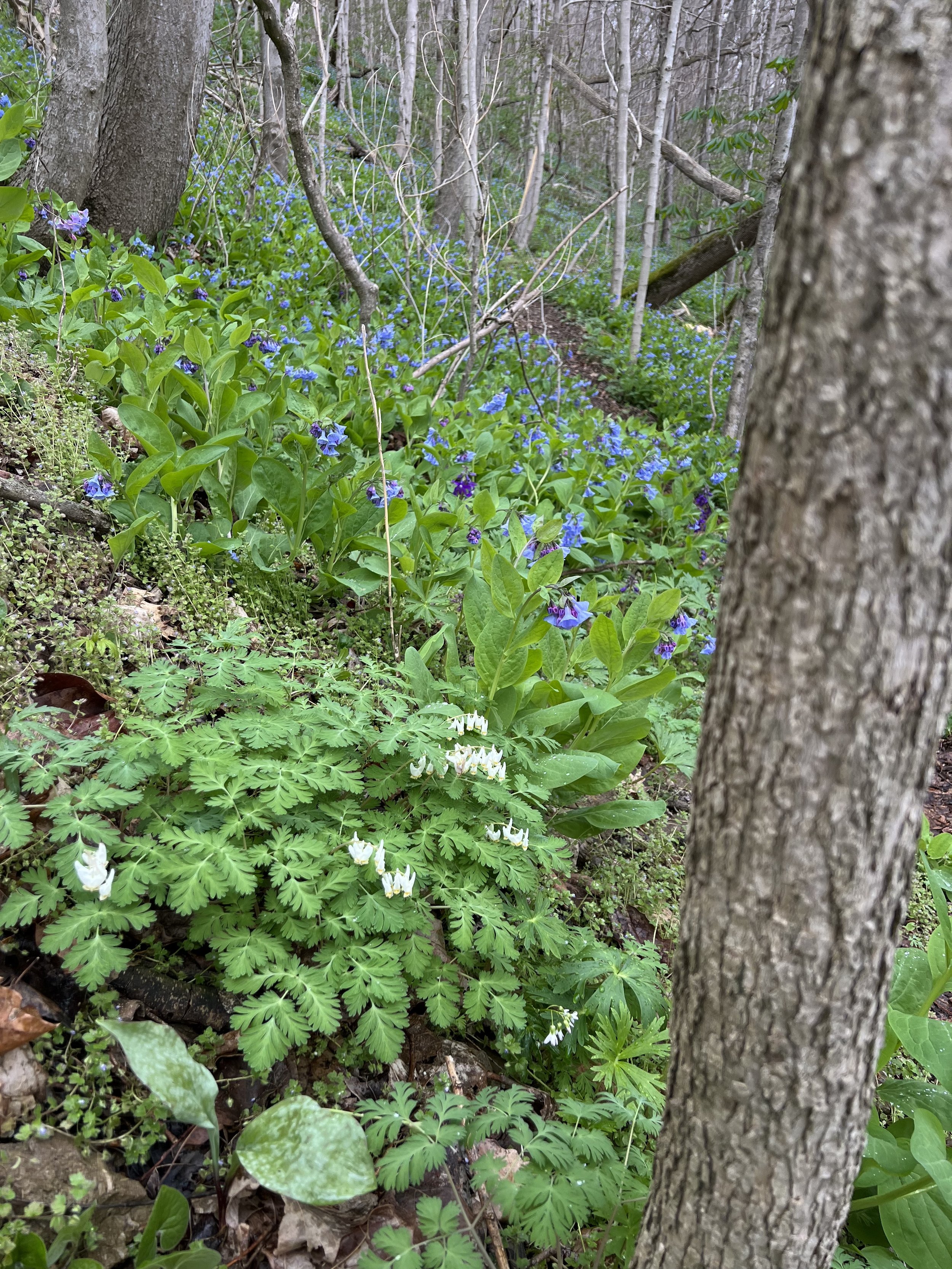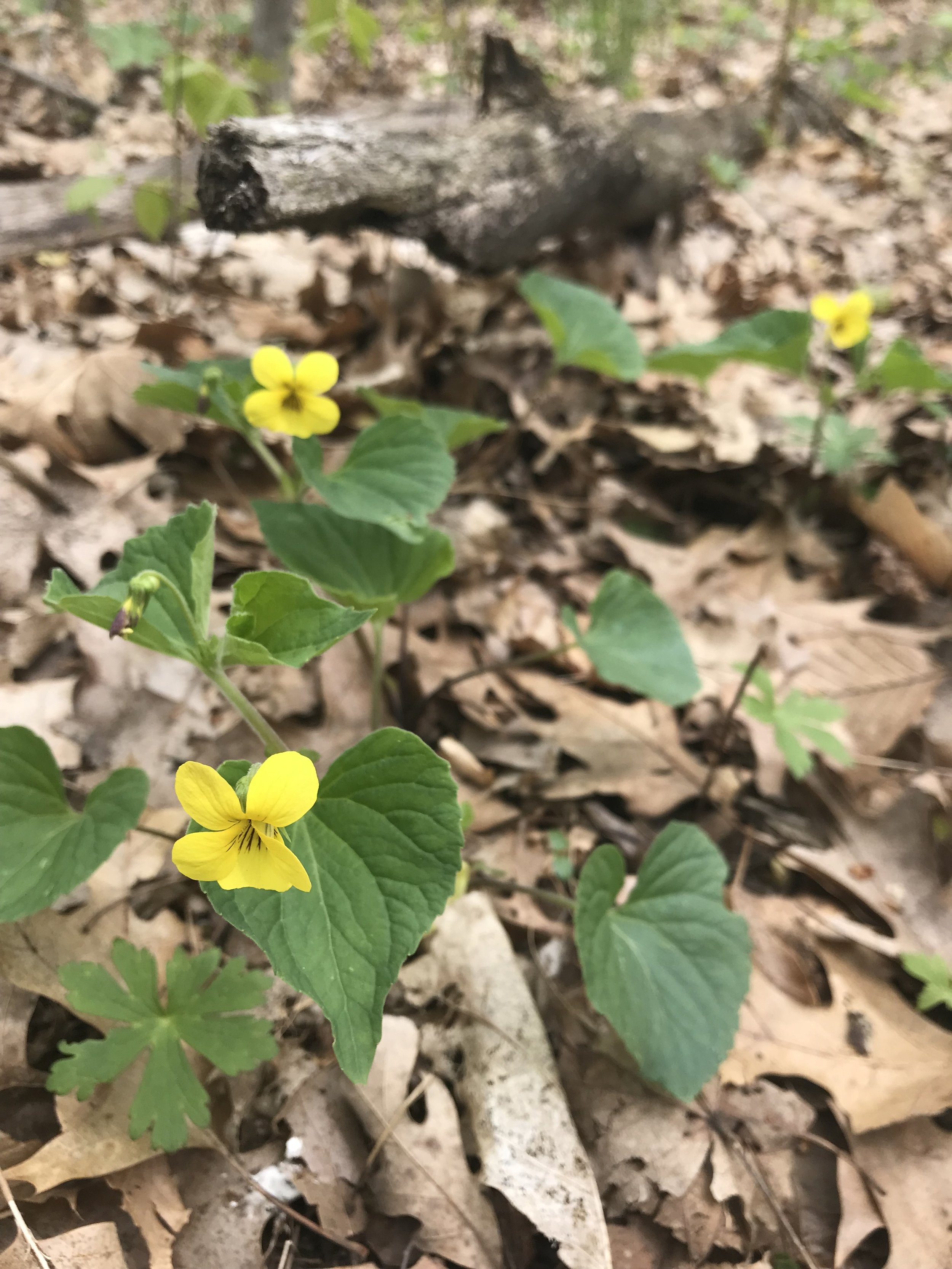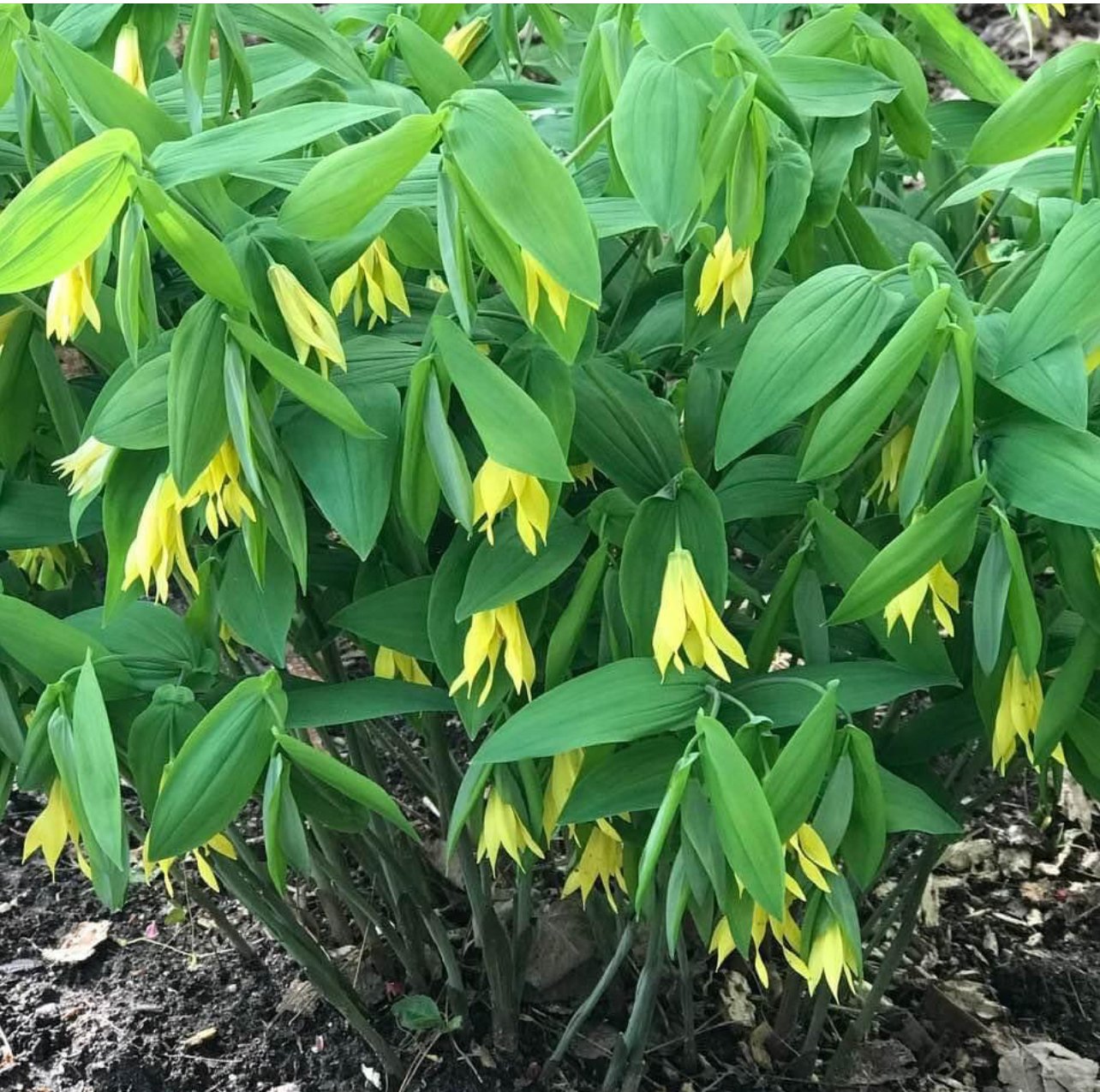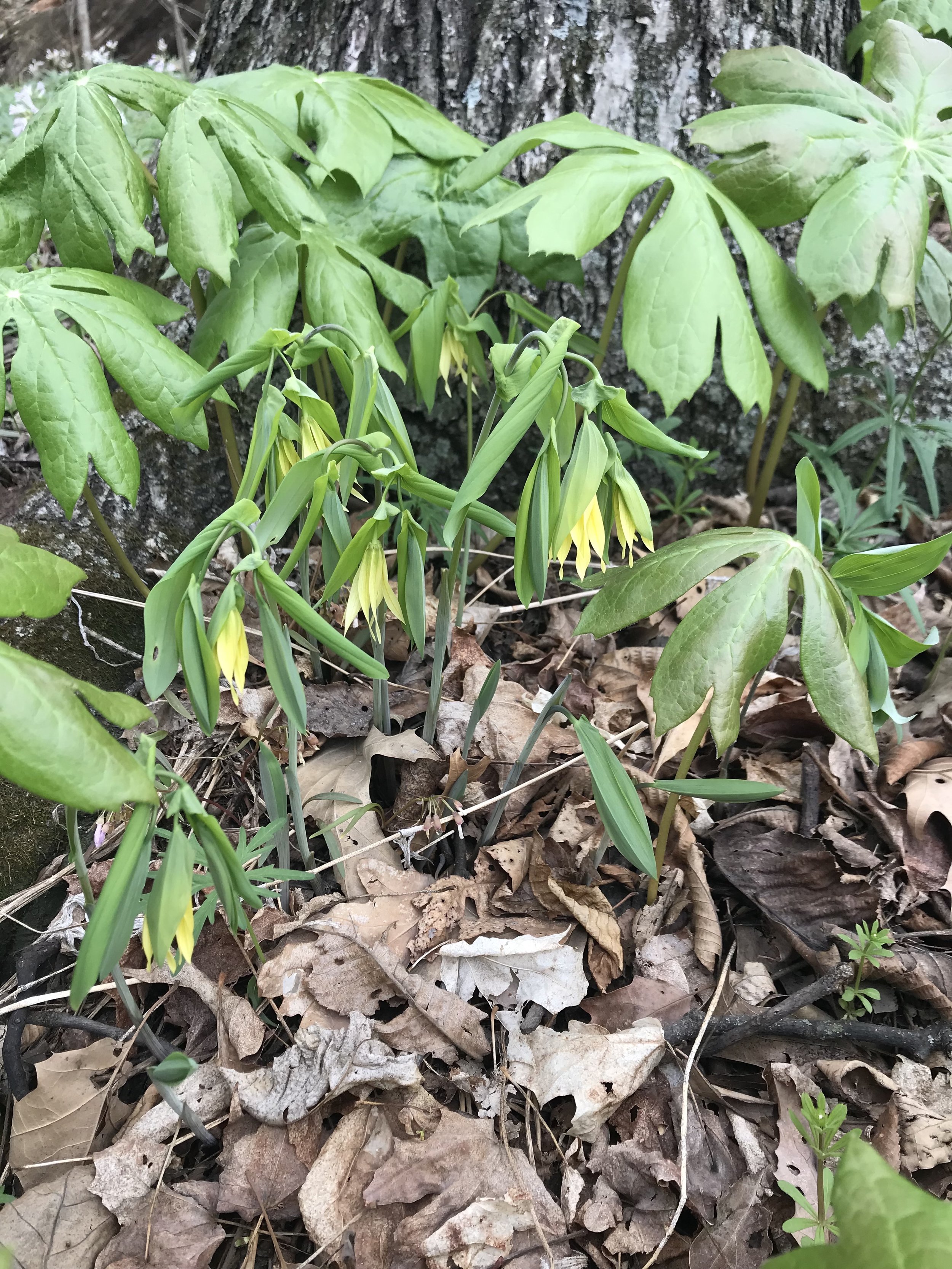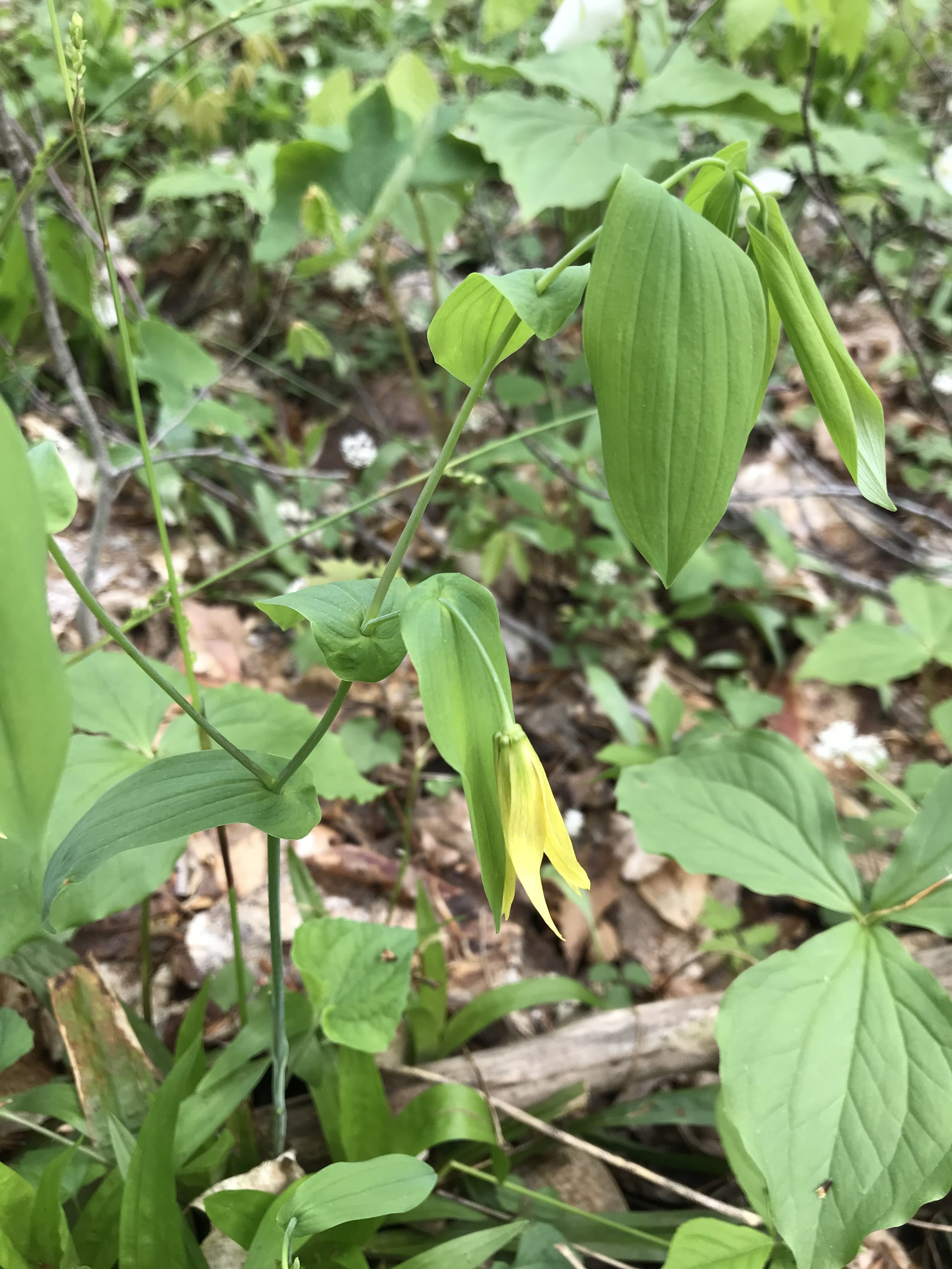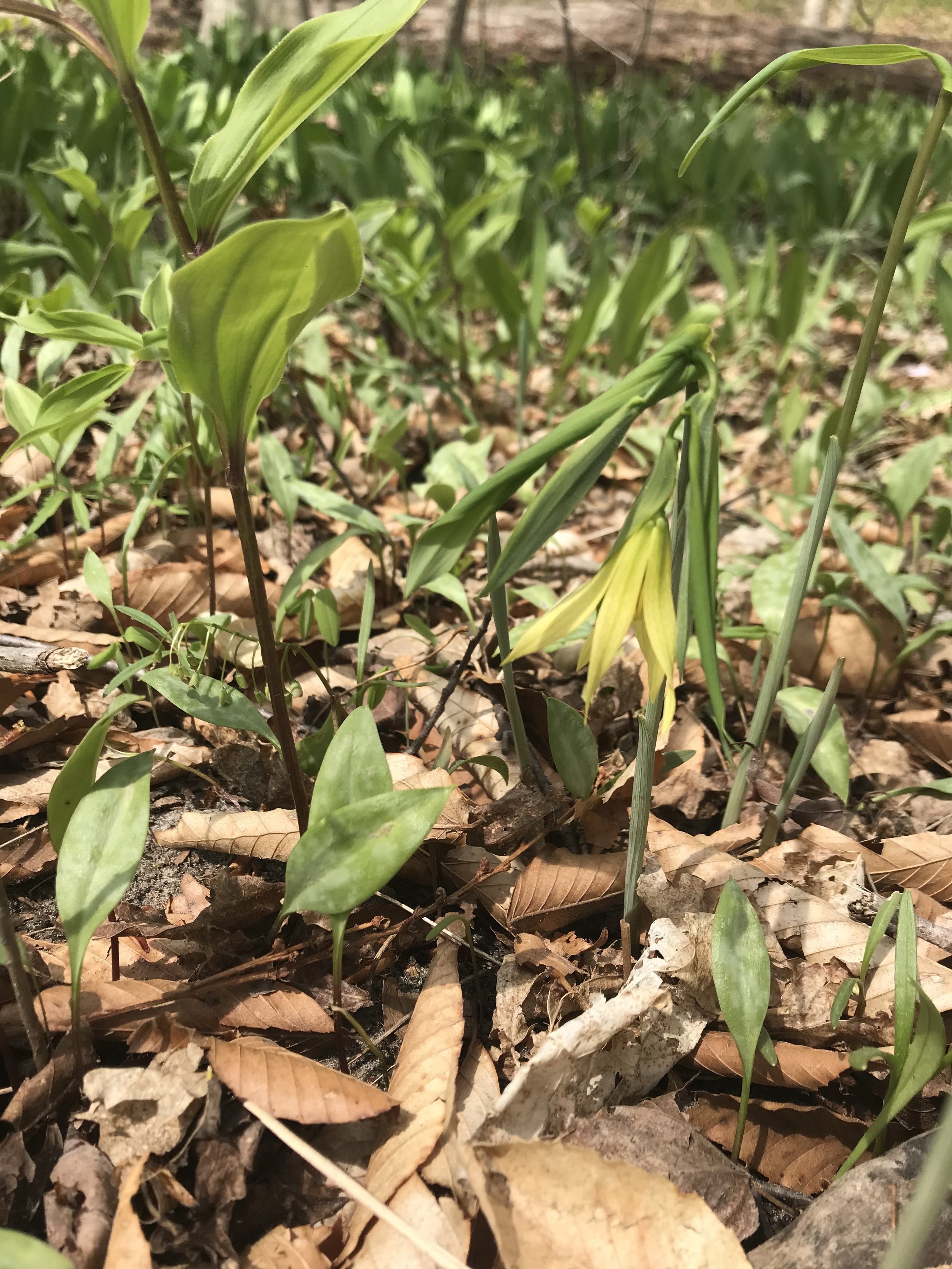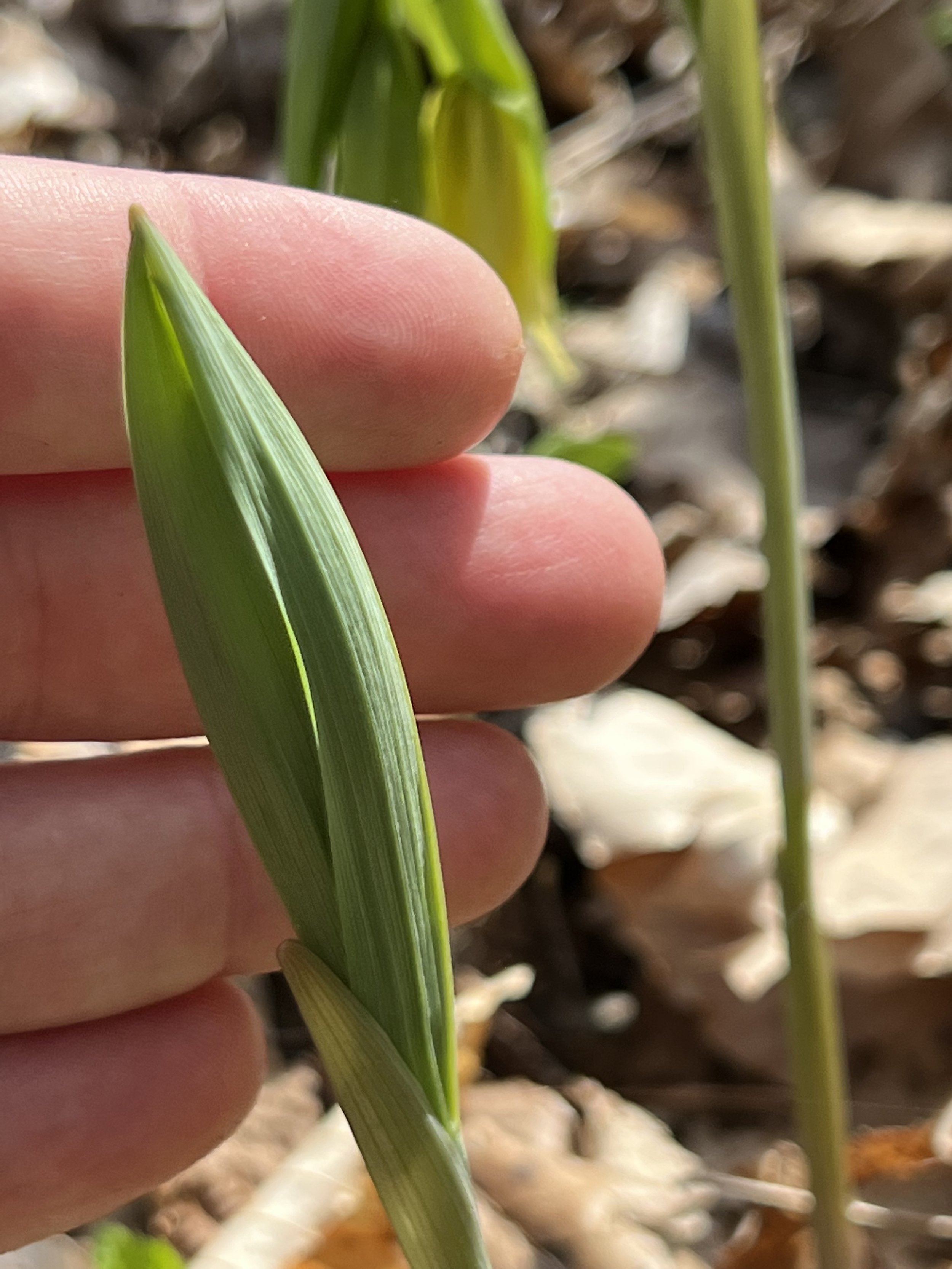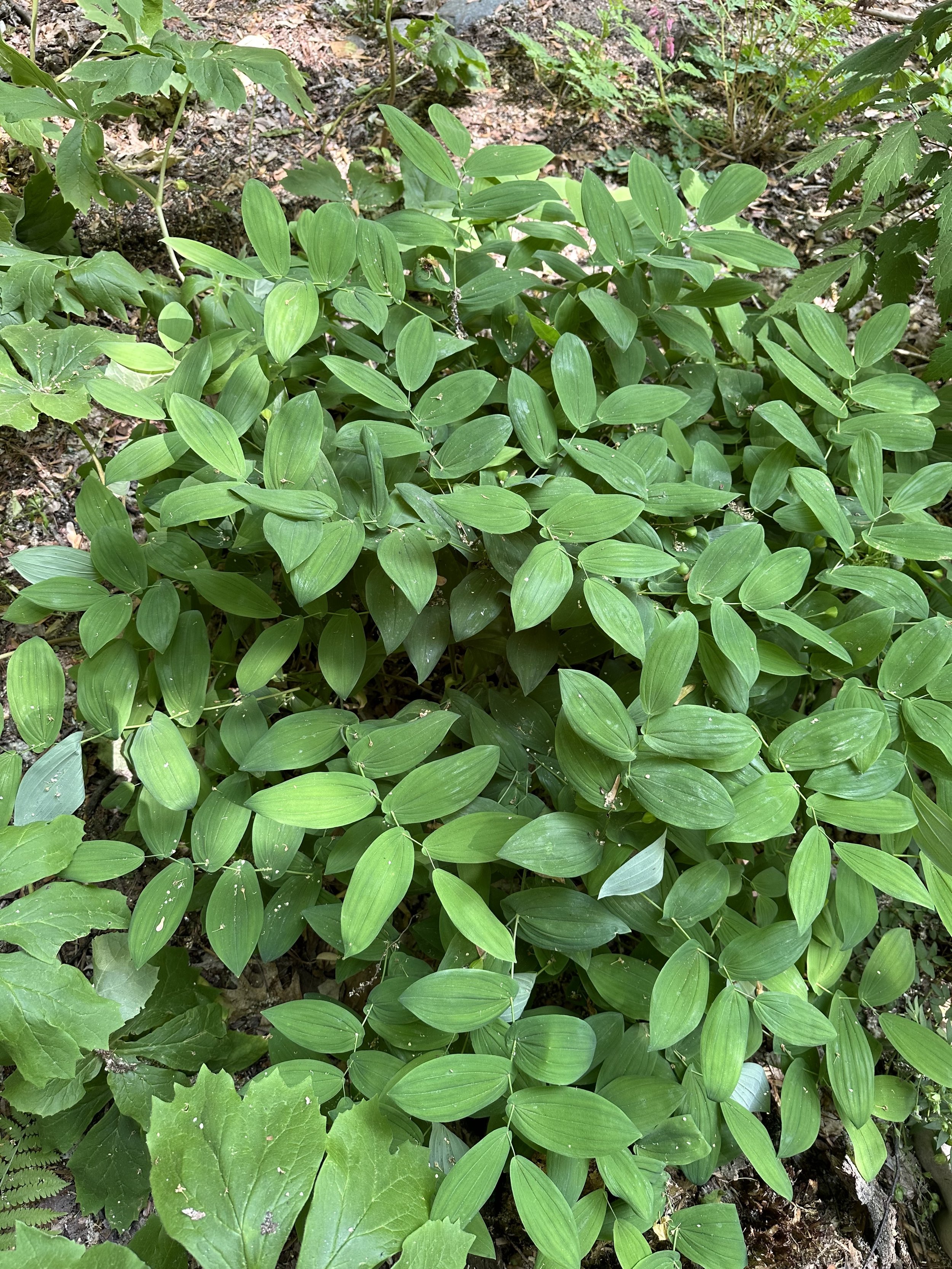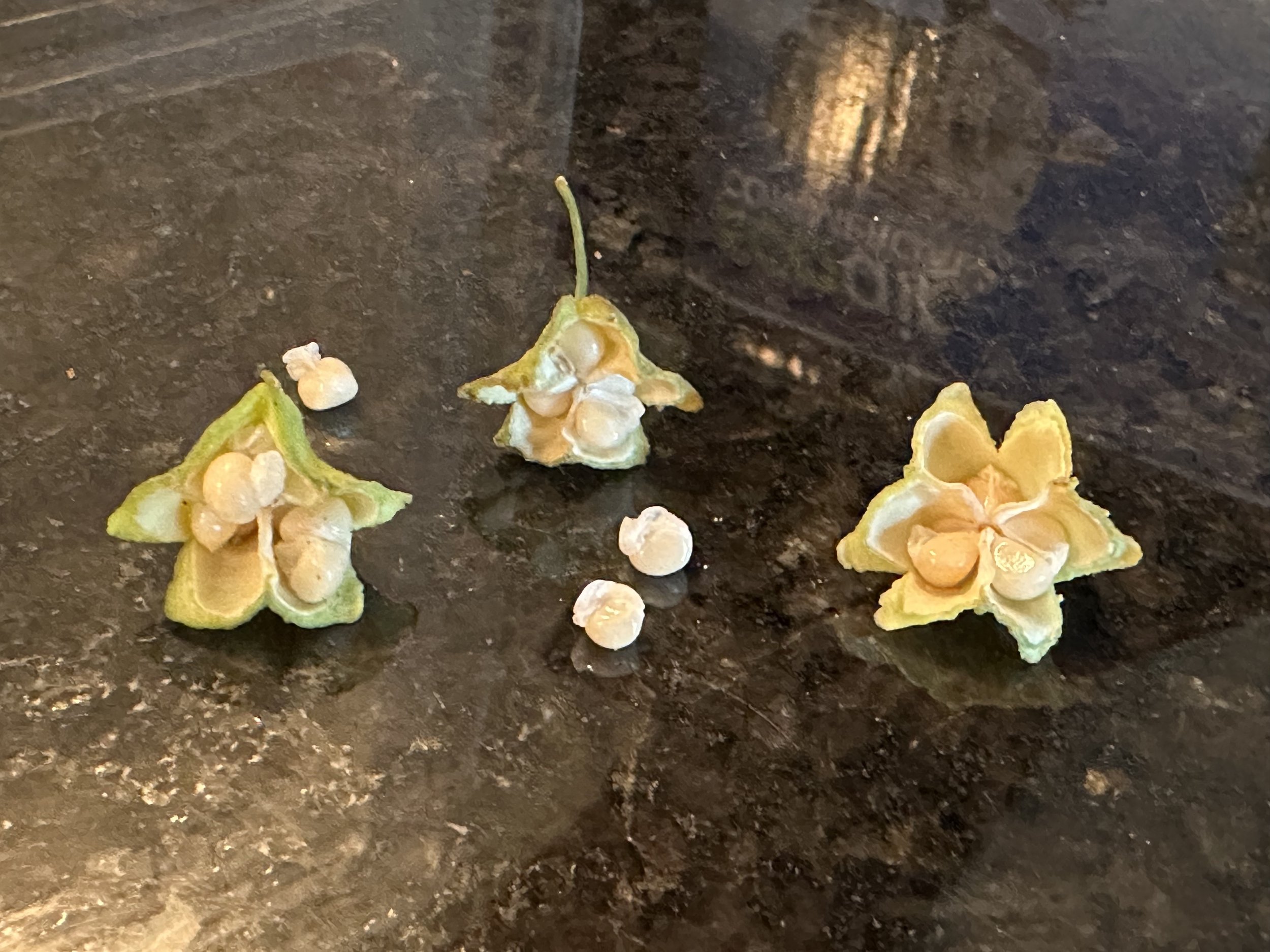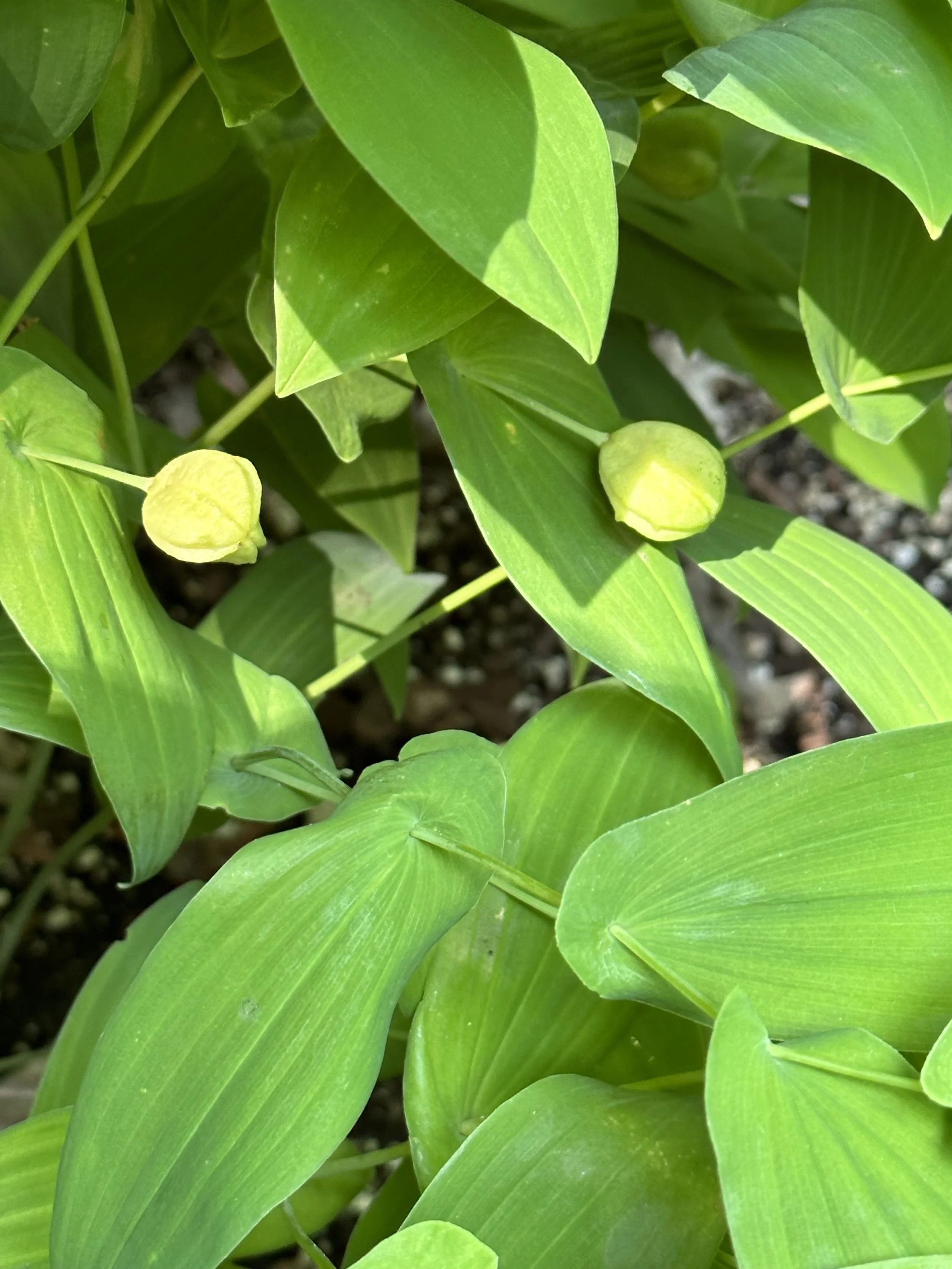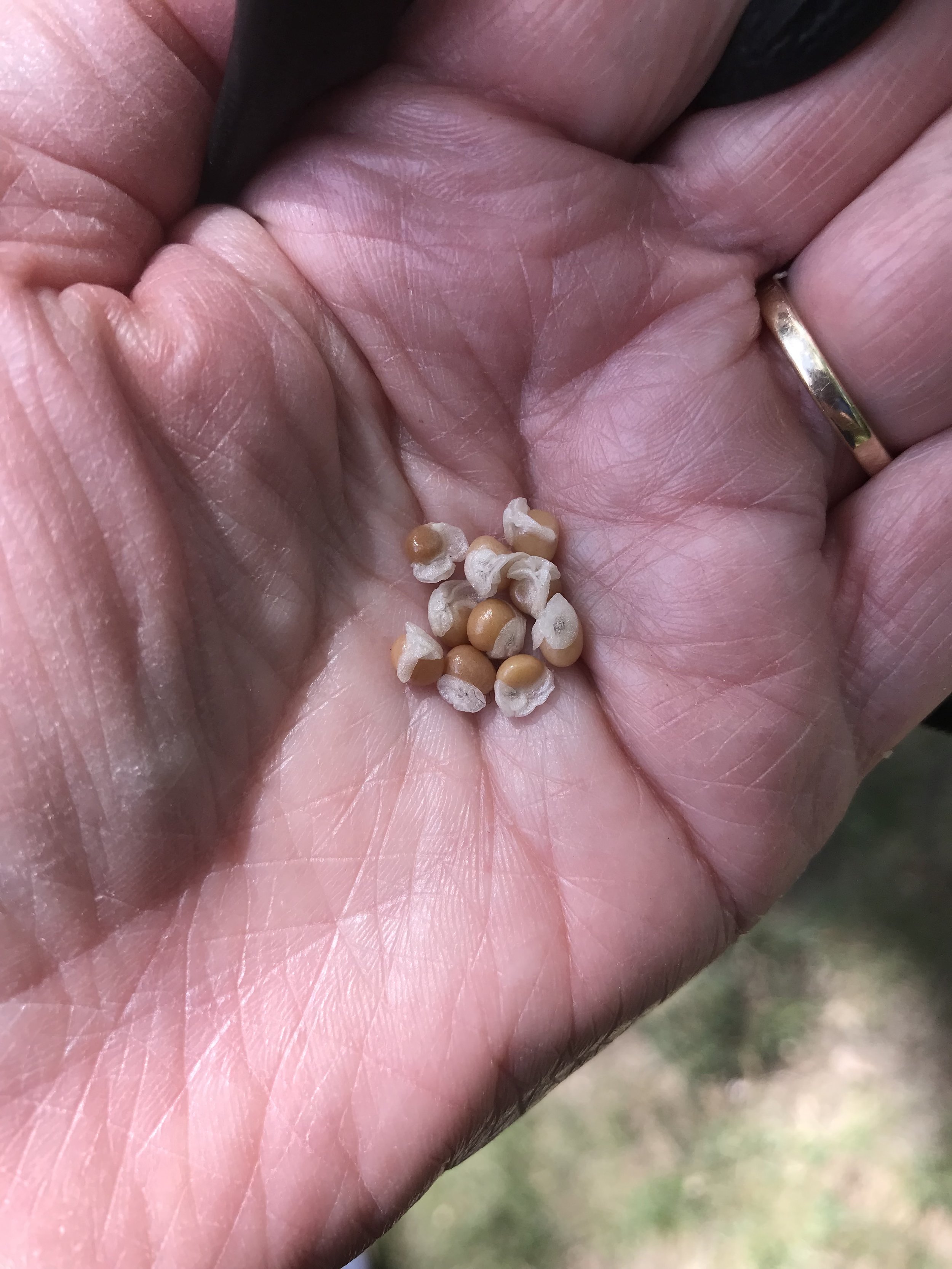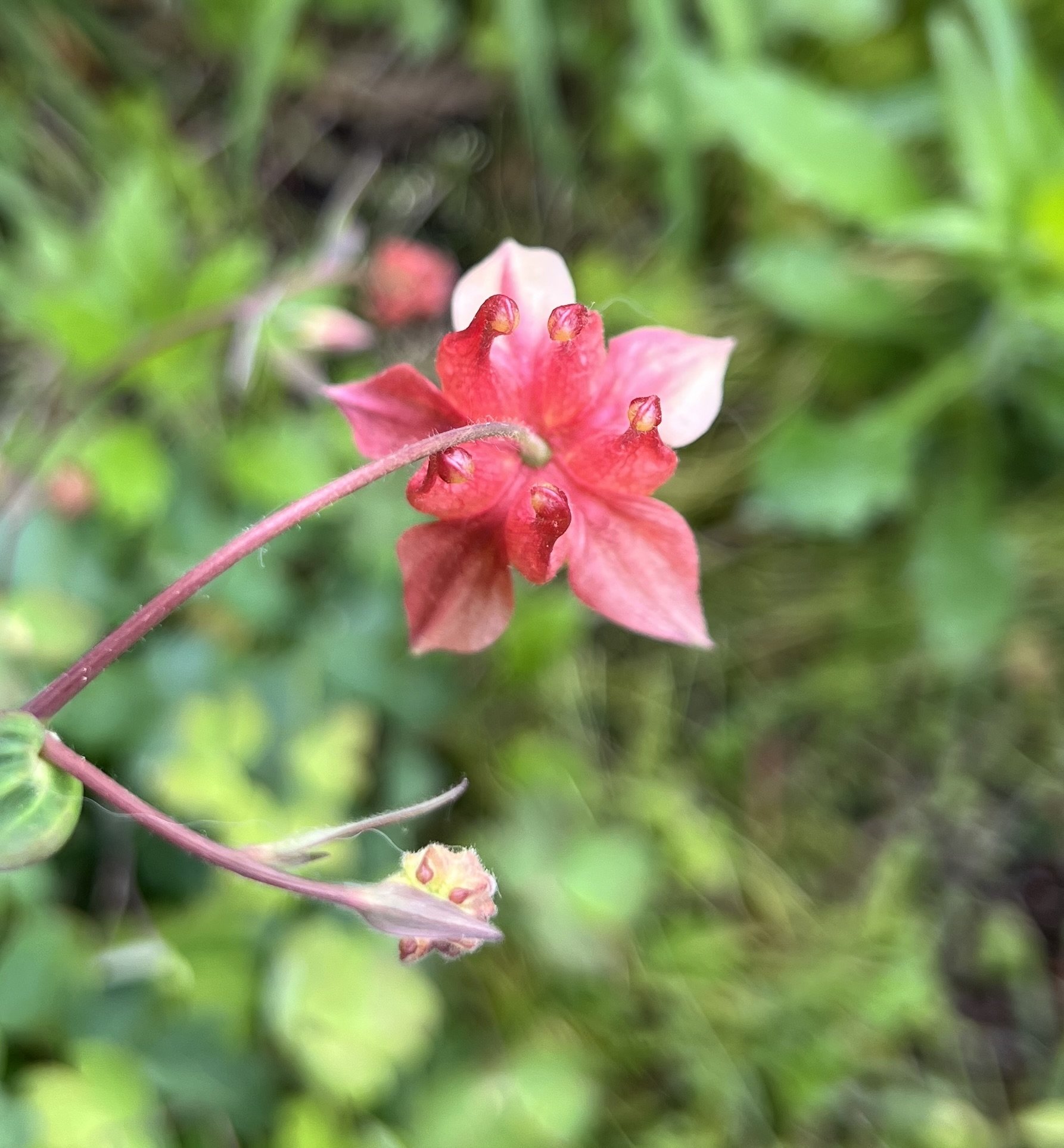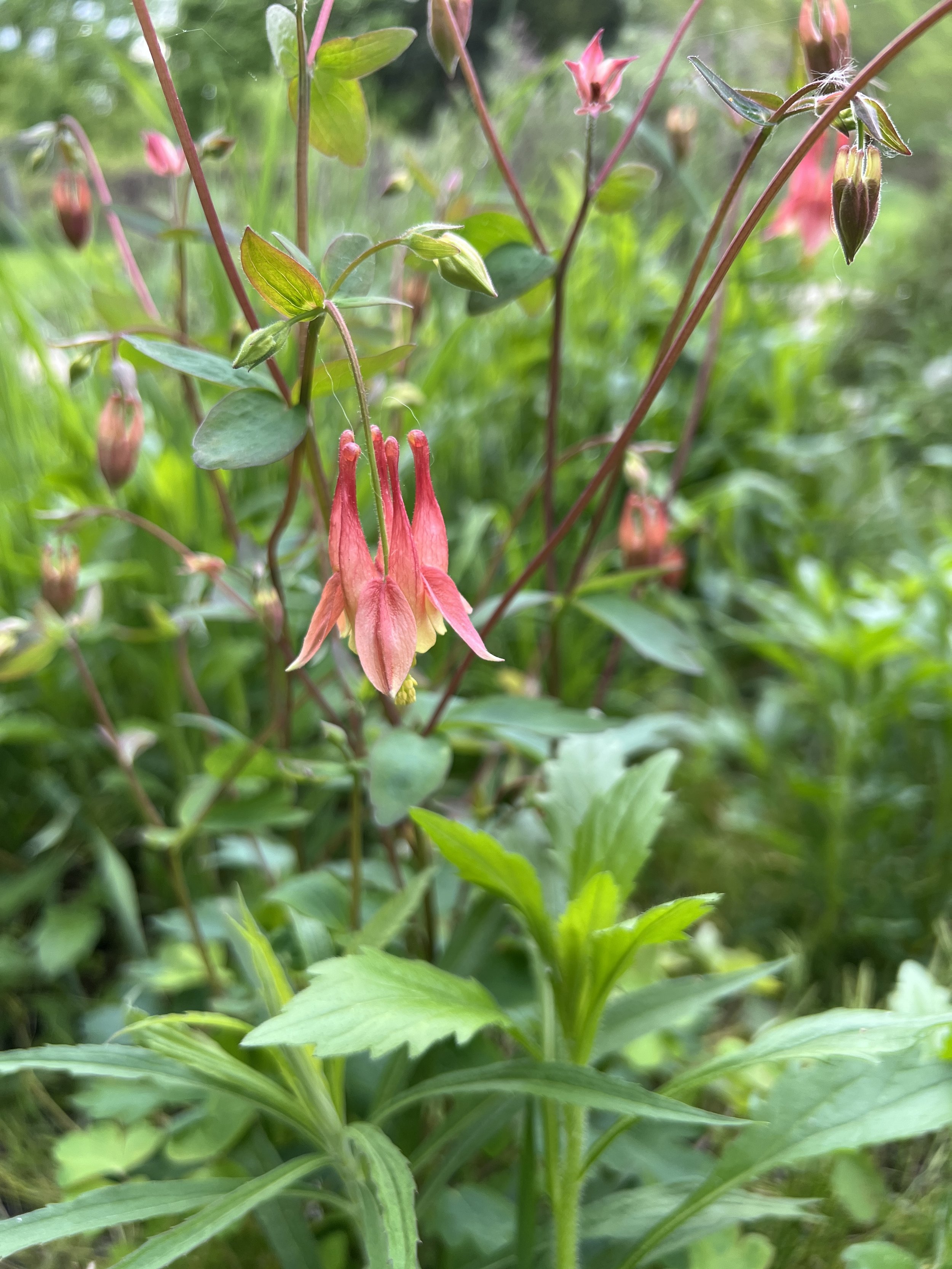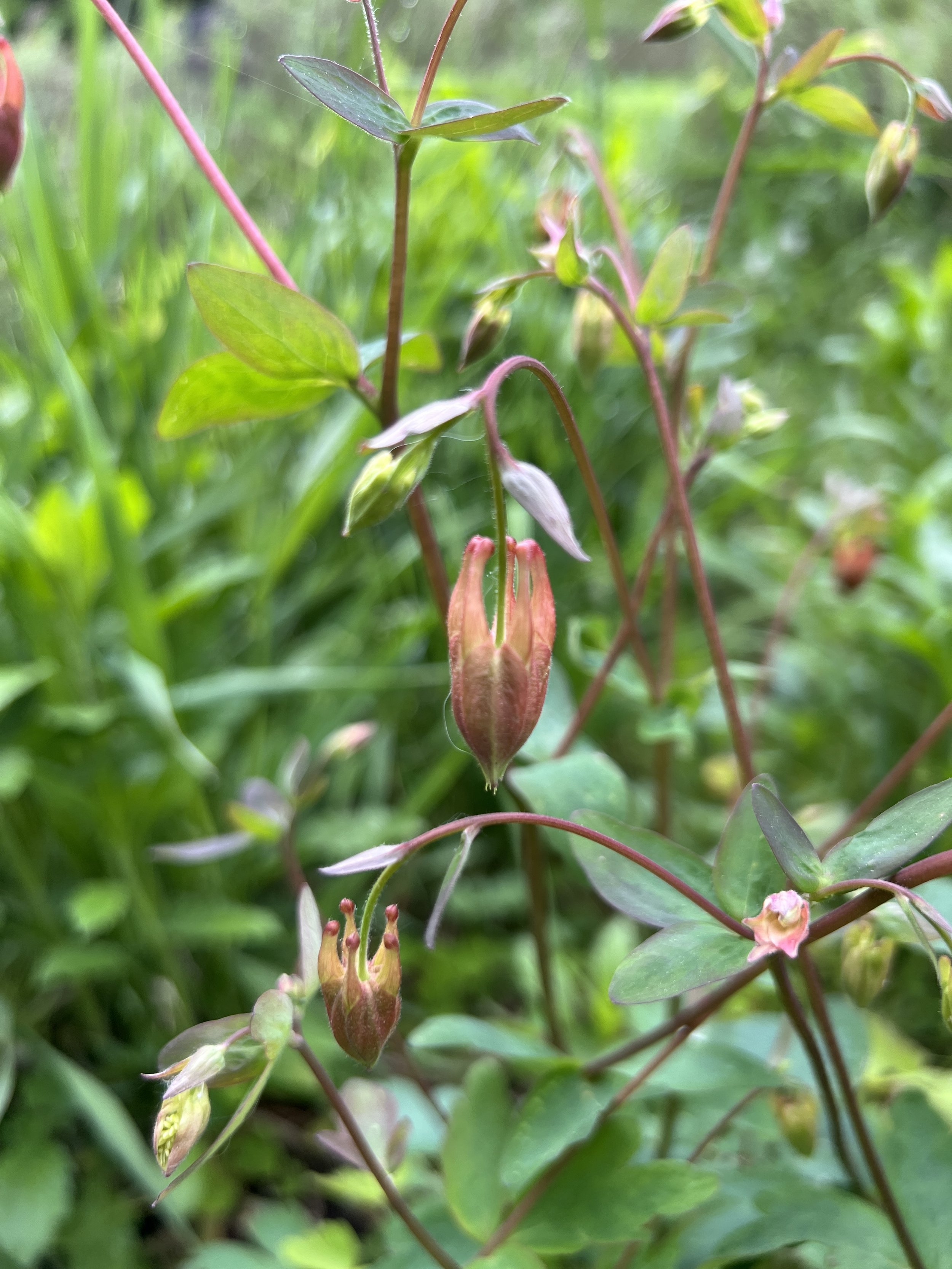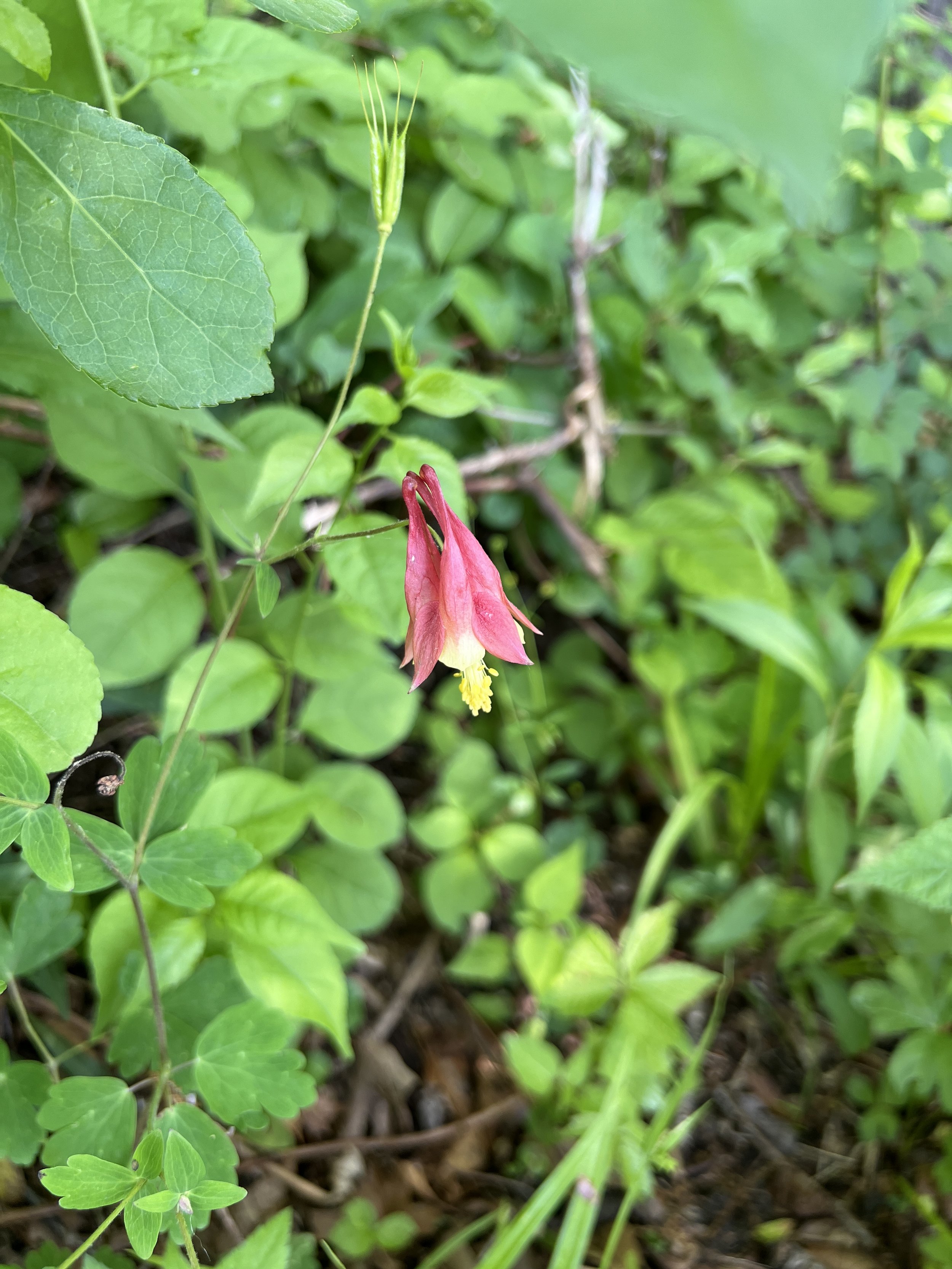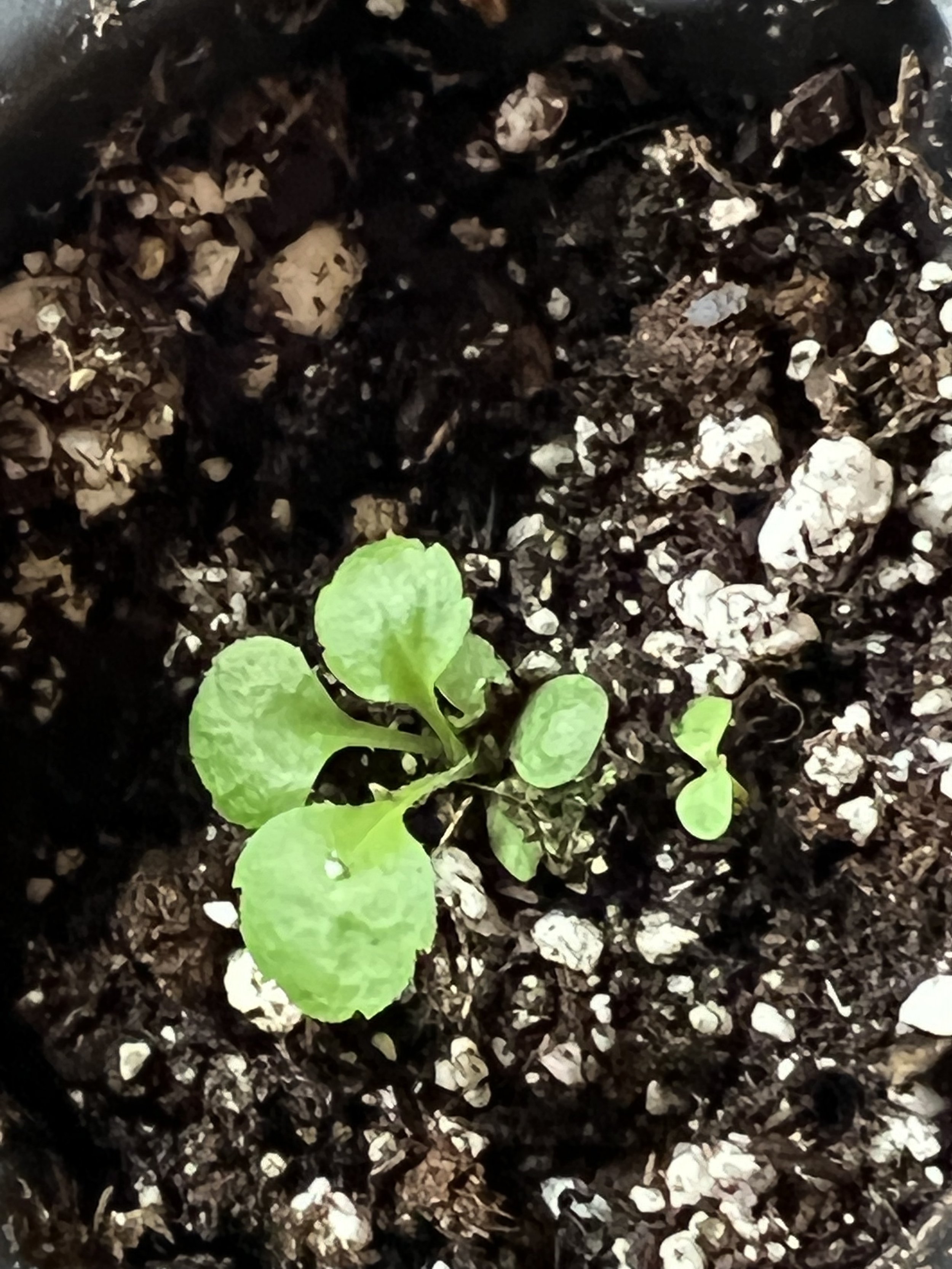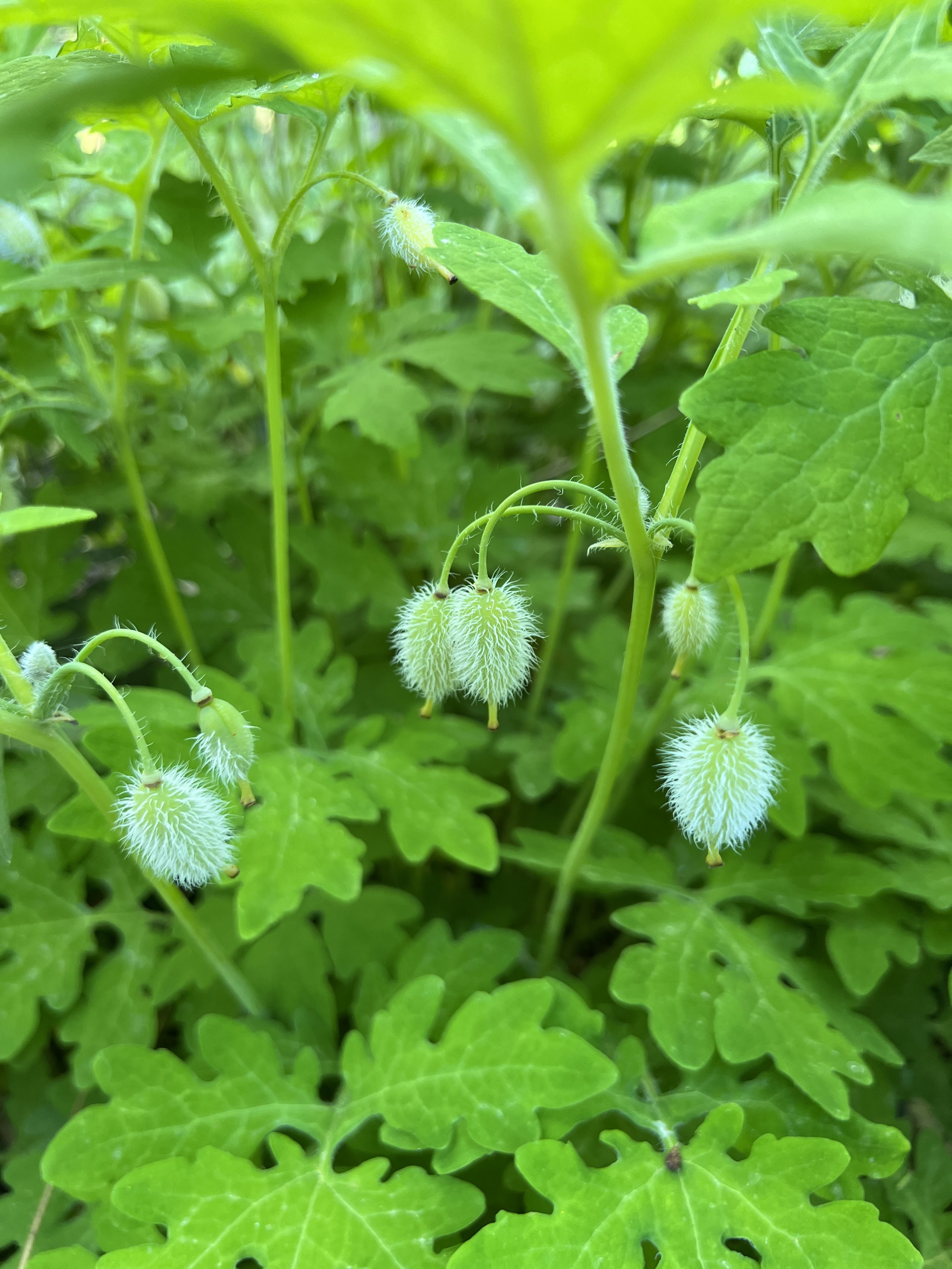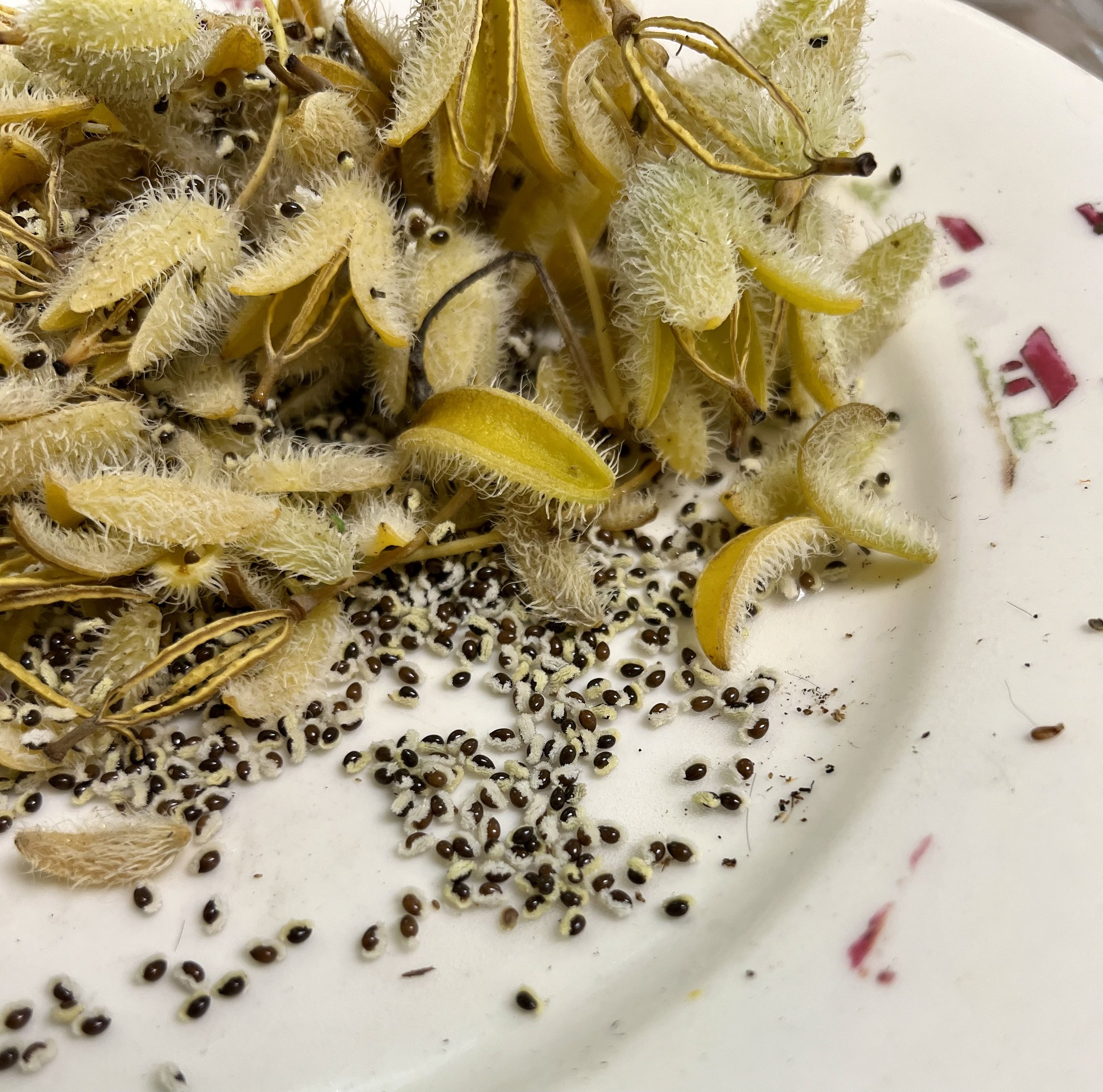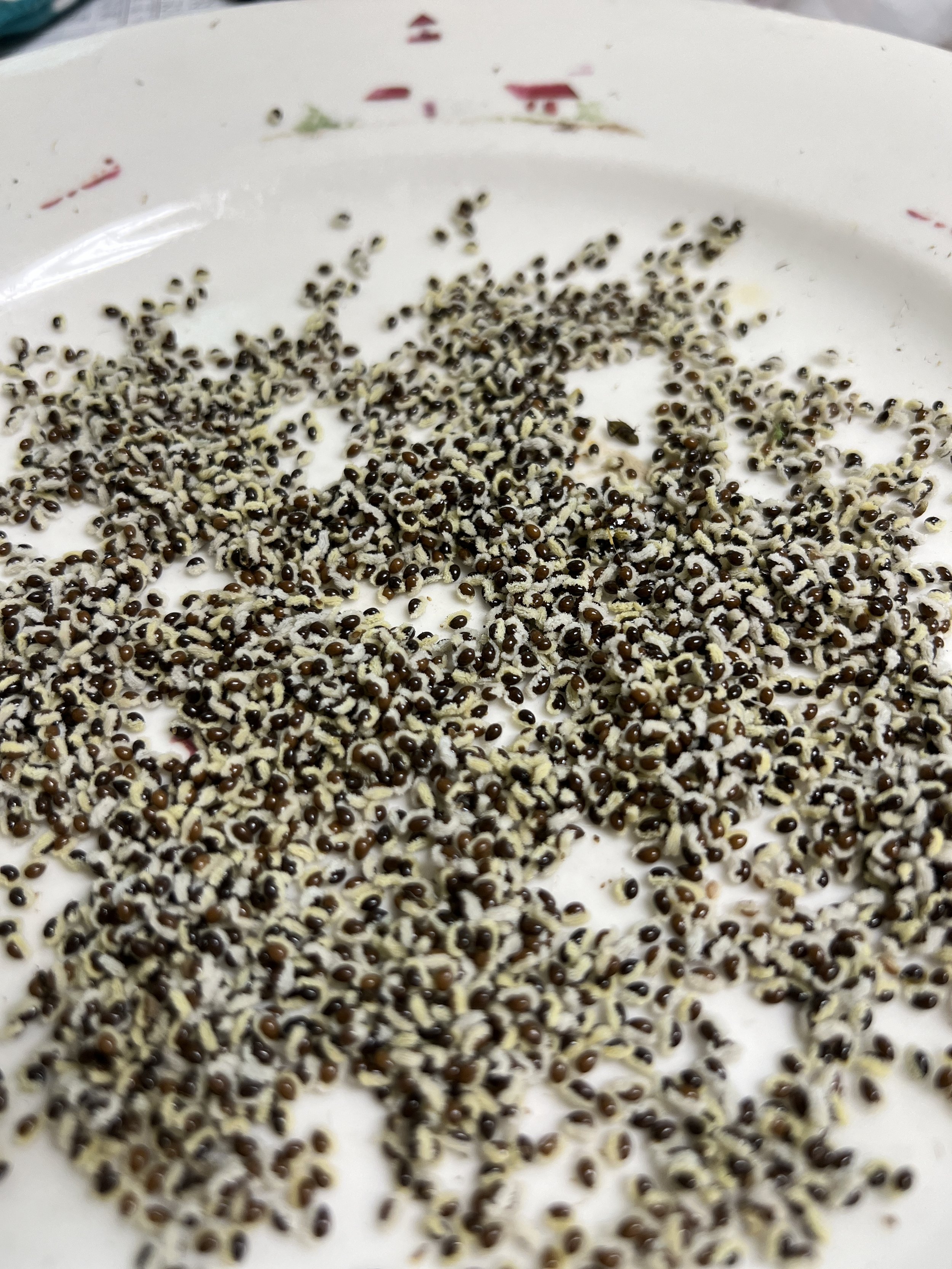Dutchman's Breeches (Dicentra cucullaria)
Twice in my life I have thought, if fairies exist, they are here. The first time was when I was at Cape Cod National Seashore watching piping plovers and their chicks zoom around on their little legs in the sand. The second time was visiting a beech maple forest in Hiawatha National Forest in the Upper Peninsula. It was full of trillium, rosy twisted stalk, emerging Northern Maidenhair fern (magic!) and Dutchman’s Breeches (Dicentra cucullaria). Photos cannot do it justice. But it came to mind because the little pantaloons fit right into the fairy theme.
The blue-green foliage of Dutchman’s breeches is intricate and a beautifully different texture than other spring greens in the forest. Flowers develop along a main stem (raceme). The two “pant legs” are up top and yellowish lobes on the bottom open up to expose the stamens (male parts) and style (female parts). These flowers bloom early in the season providing food for hungry queen bumblebees as they emerge. Dutchman’s breeches provide both nectar and pollen for insects.
After pollination, pods form along the stem and the seeds enlarge and mature inside until the pods split open. Seeds are shiny, black and have an eliasome that attracts ants.
Prairie Moon Nursery warns that a shady site is not enough for this plant. Soil needs to be rich and drain well. If you have heavy clay, this species will not thrive. Additionally, this species will do best if there are decaying leaves kept around the plants. We suggest saving a pile of fall leaves that you can draw from during the growing season, replacing them when they break down fully.
The plant itself grows out of a cluster of pinkish corms (like small bulbs) in the soil. If grown from seed, they take a few years to mature.
Dutchman’s breeches (Dicentra cucullaria)
Michigan Flora reference page for state distribution: Dutchman’s Breeches
height: 12 inches
bloom time: April-May
soil: medium, rich
sun: sun in early spring, shade in summer
plant spacing: 8”
flower: white and yellow
life cycle: perennial
family: Papaveraceae
Twice in my life I have thought, if fairies exist, they are here. The first time was when I was at Cape Cod National Seashore watching piping plovers and their chicks zoom around on their little legs in the sand. The second time was visiting a beech maple forest in Hiawatha National Forest in the Upper Peninsula. It was full of trillium, rosy twisted stalk, emerging Northern Maidenhair fern (magic!) and Dutchman’s Breeches (Dicentra cucullaria). Photos cannot do it justice. But it came to mind because the little pantaloons fit right into the fairy theme.
The blue-green foliage of Dutchman’s breeches is intricate and a beautifully different texture than other spring greens in the forest. Flowers develop along a main stem (raceme). The two “pant legs” are up top and yellowish lobes on the bottom open up to expose the stamens (male parts) and style (female parts). These flowers bloom early in the season providing food for hungry queen bumblebees as they emerge. Dutchman’s breeches provide both nectar and pollen for insects.
After pollination, pods form along the stem and the seeds enlarge and mature inside until the pods split open. Seeds are shiny, black and have an eliasome that attracts ants.
Prairie Moon Nursery warns that a shady site is not enough for this plant. Soil needs to be rich and drain well. If you have heavy clay, this species will not thrive. Additionally, this species will do best if there are decaying leaves kept around the plants. We suggest saving a pile of fall leaves that you can draw from during the growing season, replacing them when they break down fully.
The plant itself grows out of a cluster of pinkish corms (like small bulbs) in the soil. If grown from seed, they take a few years to mature.
Dutchman’s breeches (Dicentra cucullaria)
Michigan Flora reference page for state distribution: Dutchman’s Breeches
height: 12 inches
bloom time: April-May
soil: medium, rich
sun: sun in early spring, shade in summer
plant spacing: 8”
flower: white and yellow
life cycle: perennial
family: Papaveraceae
Twice in my life I have thought, if fairies exist, they are here. The first time was when I was at Cape Cod National Seashore watching piping plovers and their chicks zoom around on their little legs in the sand. The second time was visiting a beech maple forest in Hiawatha National Forest in the Upper Peninsula. It was full of trillium, rosy twisted stalk, emerging Northern Maidenhair fern (magic!) and Dutchman’s Breeches (Dicentra cucullaria). Photos cannot do it justice. But it came to mind because the little pantaloons fit right into the fairy theme.
The blue-green foliage of Dutchman’s breeches is intricate and a beautifully different texture than other spring greens in the forest. Flowers develop along a main stem (raceme). The two “pant legs” are up top and yellowish lobes on the bottom open up to expose the stamens (male parts) and style (female parts). These flowers bloom early in the season providing food for hungry queen bumblebees as they emerge. Dutchman’s breeches provide both nectar and pollen for insects.
After pollination, pods form along the stem and the seeds enlarge and mature inside until the pods split open. Seeds are shiny, black and have an eliasome that attracts ants.
Prairie Moon Nursery warns that a shady site is not enough for this plant. Soil needs to be rich and drain well. If you have heavy clay, this species will not thrive. Additionally, this species will do best if there are decaying leaves kept around the plants. We suggest saving a pile of fall leaves that you can draw from during the growing season, replacing them when they break down fully.
The plant itself grows out of a cluster of pinkish corms (like small bulbs) in the soil. If grown from seed, they take a few years to mature.
Dutchman’s breeches (Dicentra cucullaria)
Michigan Flora reference page for state distribution: Dutchman’s Breeches
height: 12 inches
bloom time: April-May
soil: medium, rich
sun: sun in early spring, shade in summer
plant spacing: 8”
flower: white and yellow
life cycle: perennial
family: Papaveraceae
There is another species in the Dicentra genus. It is Dicentra canadensis—Squirrel Corn. Rather than the pointy “pant legs” of Dutchman’s Breeches, that part of the flower is rounded so that it looks like a heart. They are also related to Bleeding Heart. Wild Ginger Woodlands only sells Dutchman’s Breeches.






